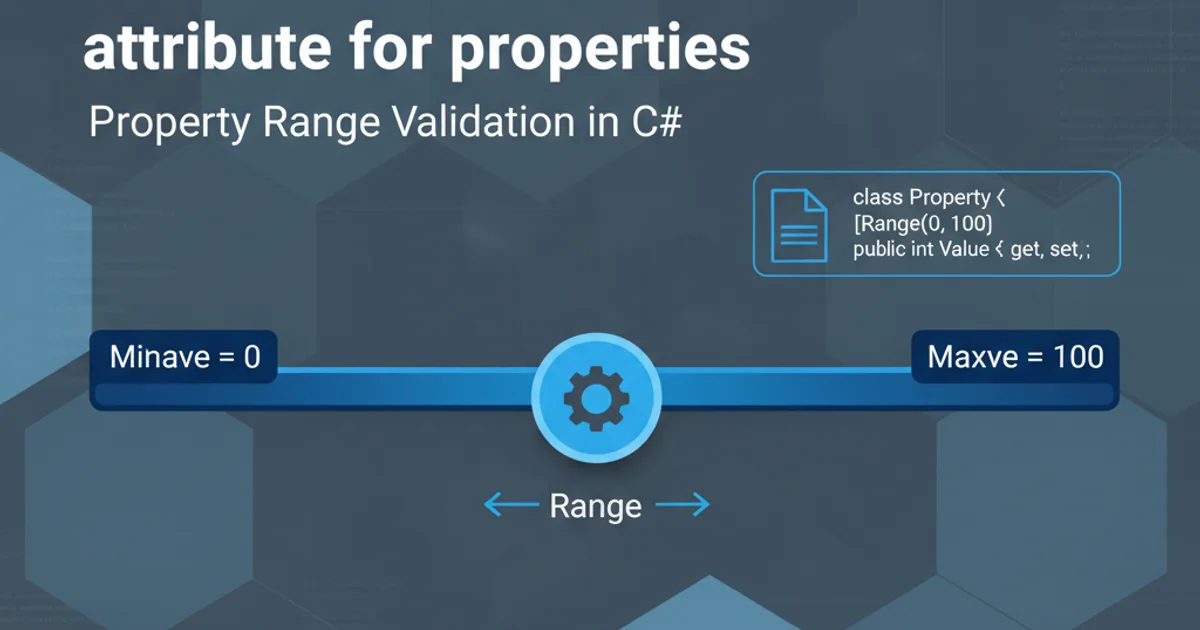When will AppDomain.ProcessExit not get called?
Categories:
Understanding When AppDomain.ProcessExit May Not Be Called in .NET

Explore the scenarios where the AppDomain.ProcessExit event might not fire as expected, crucial for robust application shutdown logic and resource management in .NET applications.
The AppDomain.ProcessExit event in .NET is designed to provide a notification when the default application domain is unloading, typically as part of a graceful process shutdown. This event is commonly used for performing cleanup operations, logging final states, or ensuring resources are properly released before the process terminates. However, there are specific circumstances where this event might not be triggered, leading to unhandled resources or incomplete shutdown procedures. Understanding these scenarios is vital for building resilient .NET applications.
The Purpose of AppDomain.ProcessExit
The AppDomain.ProcessExit event is part of the AppDomain class, which represents an application domain. In a typical .NET application, there's a default application domain where your code executes. When the process hosting this application domain is about to terminate, the ProcessExit event is raised. This allows managed code to execute final cleanup logic. It's important to distinguish this from AppDomain.DomainUnload, which is raised when a specific application domain is unloaded, but not necessarily the entire process.
flowchart TD
A[Application Start] --> B{Main Thread Exits?}
B -- Yes --> C{All Foreground Threads Terminated?}
C -- Yes --> D{AppDomain.ProcessExit Event}
D --> E[Cleanup Logic]
E --> F[Process Terminated Gracefully]
B -- No --> G[Application Continues]
C -- No --> H[Process Waits for Foreground Threads]
I[Unhandled Exception] --> J{Is it a 'Fail-Fast' Exception?}
J -- Yes --> K[Process Terminated Abruptly]
J -- No --> L{Unhandled Exception Handler?}
L -- Yes --> M[Handle Exception, Potentially Graceful Exit]
L -- No --> D
N[Environment.Exit()] --> D
O[OS Kills Process] --> KFlowchart illustrating various application exit paths and AppDomain.ProcessExit invocation.
Scenarios Where ProcessExit May Be Skipped
While AppDomain.ProcessExit is generally reliable during normal application shutdown, several situations can prevent it from being called. These often involve abrupt or non-standard termination of the process.
AppDomain.ProcessExit for critical resource cleanup (e.g., database connections, file handles) can be risky. Always implement IDisposable and use using statements for deterministic resource management.1. Abrupt Process Termination by the Operating System
If the operating system forcibly terminates the process, AppDomain.ProcessExit will not be called. This can happen due to:
- Task Manager/Process Explorer: A user manually ending the process.
- System Shutdown/Restart: If the system shuts down or restarts, processes may be terminated without a chance to execute managed cleanup code.
- Resource Exhaustion: The OS might kill a process that consumes too many resources (e.g., memory, CPU) or becomes unresponsive.
- External Tools: Other tools or scripts that use
taskkillor similar commands to terminate processes.
2. Unhandled Exceptions Leading to Fail-Fast
Certain types of unhandled exceptions can lead to a 'fail-fast' termination of the process, bypassing AppDomain.ProcessExit. This is particularly true for exceptions that indicate severe corruption or instability within the runtime itself, such as StackOverflowException (prior to .NET 2.0, and still often fatal) or OutOfMemoryException in critical scenarios. While UnhandledException event handlers might catch some exceptions, if the CLR decides the process is irrecoverable, it may terminate immediately.
using System;
using System.Threading;
class Program
{
static void Main(string[] args)
{
AppDomain.CurrentDomain.ProcessExit += CurrentDomain_ProcessExit;
AppDomain.CurrentDomain.UnhandledException += CurrentDomain_UnhandledException;
Console.WriteLine("Application started. Press any key to simulate an unhandled exception.");
Console.ReadKey();
// This will likely cause a fail-fast termination in some scenarios
// and ProcessExit might not be called.
// For demonstration, a simple unhandled exception:
throw new InvalidOperationException("Simulating a critical unhandled exception.");
// To simulate a more aggressive termination, consider:
// Environment.FailFast("Simulating a fail-fast termination.");
}
static void CurrentDomain_ProcessExit(object sender, EventArgs e)
{
Console.WriteLine("ProcessExit event fired. Performing cleanup...");
// Cleanup logic here
Thread.Sleep(1000); // Simulate cleanup work
Console.WriteLine("Cleanup complete.");
}
static void CurrentDomain_UnhandledException(object sender, UnhandledExceptionEventArgs e)
{
Console.WriteLine($"Unhandled Exception: {((Exception)e.ExceptionObject).Message}");
if (e.IsTerminating)
{
Console.WriteLine("Application is terminating due to unhandled exception.");
// Depending on the exception type and CLR version, ProcessExit might still fire
// or the process might terminate abruptly.
}
}
}
Example demonstrating AppDomain.ProcessExit and UnhandledException handlers. A critical unhandled exception might bypass ProcessExit.
3. Environment.FailFast()
The Environment.FailFast() method is explicitly designed to terminate the process immediately without performing any cleanup, including not raising AppDomain.ProcessExit or AppDomain.UnhandledException. It's typically used in situations where the application state is so corrupted that further execution is unsafe, and a quick termination is preferred over attempting a graceful shutdown.
using System;
class Program
{
static void Main(string[] args)
{
AppDomain.CurrentDomain.ProcessExit += CurrentDomain_ProcessExit;
Console.WriteLine("Calling Environment.FailFast(). ProcessExit will NOT be called.");
Environment.FailFast("Critical error: Application state corrupted.");
}
static void CurrentDomain_ProcessExit(object sender, EventArgs e)
{
Console.WriteLine("This message will NOT be displayed.");
}
}
Using Environment.FailFast() to terminate a process, bypassing ProcessExit.
4. Foreground Threads Not Terminating
A .NET process will only terminate when all foreground threads have completed their execution. If a foreground thread enters an infinite loop or gets blocked indefinitely, the process will not exit, and consequently, AppDomain.ProcessExit will not be raised. Background threads, on the other hand, do not prevent a process from terminating.
5. Native Code Termination
If the .NET application hosts native code (e.g., via P/Invoke) and that native code directly terminates the process (e.g., by calling ExitProcess on Windows), the managed runtime might not get a chance to raise AppDomain.ProcessExit.
Best Practices for Robust Cleanup
Given these scenarios, it's clear that AppDomain.ProcessExit should not be the sole mechanism for critical cleanup. A multi-layered approach is recommended:
IDisposableandusingstatements: For deterministic resource release, especially for unmanaged resources, implementIDisposableand useusingblocks. This ensures resources are released as soon as they are no longer needed.finallyblocks: Usefinallyblocks to ensure cleanup code runs regardless of whether an exception occurs.AppDomain.UnhandledException: Handle unhandled exceptions to log errors and attempt a graceful shutdown if possible, though this might not prevent fail-fast scenarios.AppDomain.ProcessExit: Use this for application-wide, non-critical cleanup or logging that should occur during a normal shutdown.- External Monitoring/Recovery: For mission-critical applications, consider external monitoring tools or watchdog processes that can detect and restart failed applications, ensuring business continuity even if an application terminates abruptly.